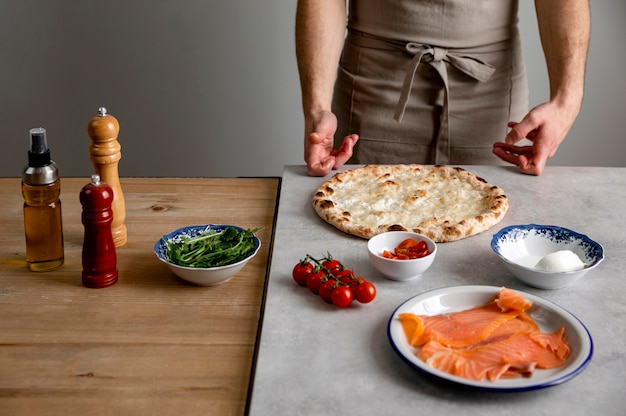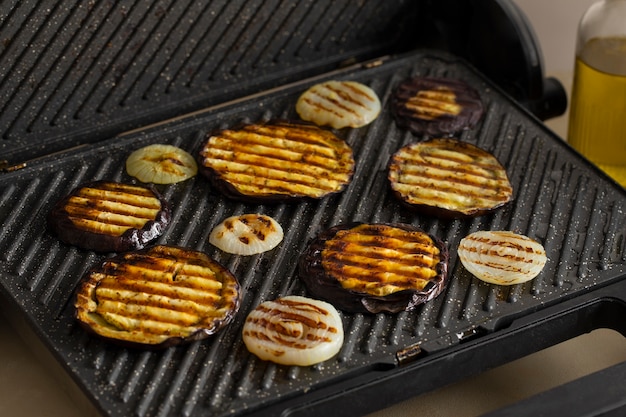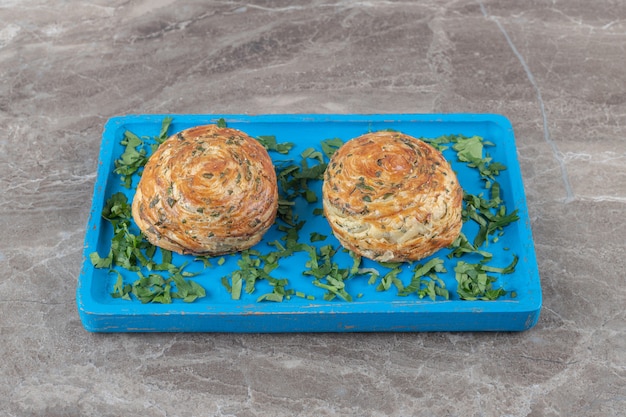Let’s be honest, crab cakes are a culinary masterpiece. Those golden, crispy morsels of seafood heaven are practically begging to be devoured! I’ve been a devoted fan for as long as I can remember, trying every variation imaginable – from the classic Maryland-style to fancier, more elaborate concoctions. But you know what? There’s something truly special about a good, old-fashioned oven-baked crab cake. It’s all about showcasing the fresh, delicate flavour of the crab without any fancy distractions. And let me tell you, once you've tasted a perfectly baked crab cake, you'll never go back.
So, buckle up, because I'm going to share my ultimate guide to creating the most incredible oven-baked crab cakes you've ever experienced. We're going to cover everything from choosing the right crab meat to perfecting the batter, and I’ll even share a few of my favourite tips and tricks for achieving crispy, golden perfection. Get ready to become a crab cake connoisseur, because we're about to take this culinary journey together. Let's dive in!
(Part 1) The Foundation: Choosing the Perfect Crab Meat

The crab meat is the star of the show, so choosing the right kind is absolutely crucial. My go-to choice is always lump crab meat. It’s the largest, most succulent cut, boasting a seriously impressive flavour. Now, within the world of lump crab meat, there are two main contenders: jumbo lump and backfin lump. Jumbo lump is the pricier option, but oh, the tenderness! It's so flaky and delicate. Backfin lump, on the other hand, is a bit more budget-friendly and still delicious, but it might have a bit more texture. It’s really a matter of personal preference. I tend to go for jumbo lump when I'm feeling extra indulgent and want that melt-in-your-mouth experience.
Avoid using claw meat – it’s usually quite stringy and can make the crab cake crumbly. If you’re on a budget, a mix of lump and claw can work, but be sure to meticulously pick out any stray bits of shell before you start mixing. Trust me, nobody wants a surprise shell crunch in their crab cake.
Tip: Fresh is Best
Always look for crab meat that's labelled as "pasteurized" or "fresh-frozen." Fresh crab meat is the ultimate choice, but if you can't find it, frozen is a perfectly acceptable alternative. Just make sure you thaw it thoroughly in the fridge before you use it. You wouldn’t want to bake your crab cakes with ice crystals in them! Those little guys can ruin the texture, and we want our crab cakes to be the best they can be.
(Part 2) The Secret Weapon: The Perfect Batter

Now we're getting into the real magic. The batter is the secret weapon that binds the crab meat together and gives the crab cakes their signature texture. I've tried countless batter recipes over the years, and believe me, there’s a huge difference between a good one and a great one. Here’s what makes my batter truly special:
The Ingredients
First, we start with good old-fashioned mayonnaise. It adds moisture and richness to the batter, while also helping to bind the crab meat together. Then, we use Dijon mustard for a touch of tanginess and flavour. A little bit of Worcestershire sauce gives it a savoury depth, and I always add a pinch of old bay seasoning for that classic crab cake flavour. Finally, we whisk in a little bit of egg to help bind the batter and ensure that everything stays together. You can experiment with different herbs and spices to suit your taste, but these are the essential ingredients that make my batter truly unbeatable.
The Technique
The trick is to keep the batter as simple as possible. Don’t overthink it! Gently fold the batter into the crab meat until it's just combined. Over-mixing will toughen the crab cakes, so be gentle! Remember, we want a light and fluffy texture, not a dense, rubbery mess.
Tip: Chill It Out
Once you’ve mixed the batter, pop it in the fridge for at least 30 minutes. This gives the flavours time to meld and ensures that the crab cakes hold their shape during baking. It’s also a great way to prevent the batter from getting too runny, which can make it difficult to shape the crab cakes.
(Part 3) Shaping the Crab Cakes: A Matter of Skill (and a Little Patience)

Here’s where things get a little bit hands-on. You'll want to shape the crab cakes into nice, even patties. This part takes a bit of practice, but trust me, it’s worth it. Here’s my tried-and-true method:
The Process
Firstly, you’ll want to wet your hands with a little bit of water to prevent the crab meat from sticking. Then, gently scoop out about 1/4 cup of the batter and shape it into a patty. You can press the patties slightly to flatten them, but try to keep them as thick as possible. A thicker crab cake will retain more moisture and result in a more succulent bite. If you want perfectly even patties, you can use a ring mold, but I prefer to shape them by hand. It gives them a more rustic look and allows you to adjust the size based on your preferences.
Tip: Don’t Over-Handle the Batter
Remember, the goal is to keep the crab meat as tender as possible. Gently form the patties and avoid over-handling them. If you feel like the crab cakes are getting too soft, simply refrigerate them for a few more minutes to firm up before baking. This will help them maintain their shape and prevent them from falling apart in the oven.
(Part 4) Baking Perfection: The Ultimate Test
We’re in the home stretch. The oven is preheating, the crab cakes are ready, and you're practically salivating at the thought of that golden, crispy goodness. Now it's time to get baking!
The Technique
Preheat your oven to 375°F (190°C). Line a baking sheet with parchment paper for easy clean-up. You don’t want any stuck-on crab cake remnants, believe me. Then, place the crab cakes on the baking sheet, making sure there’s enough space between them for even browning. Brush the tops with a little bit of melted butter for that extra bit of richness and shine. Now, slide those beauties into the oven and let them bake for about 20-25 minutes, or until they’re golden brown and cooked through. You’ll know they’re done when the internal temperature reaches 165°F (74°C).
Tip: Monitor the Baking Process
Keep a close eye on the crab cakes as they bake. If they start to brown too quickly, you can cover the baking sheet with foil for a few minutes to slow down the browning process. Just remember to remove the foil for the last few minutes to allow the tops to crisp up. We want that perfect balance of golden-brown exterior and tender, juicy interior.
(Part 5) The Finishing Touches: Adding a Touch of Magic
The crab cakes are baked to perfection, golden and glistening, just waiting to be devoured. But hold on! We’re not quite there yet. It’s time to add those final touches that elevate these little morsels to a whole new level of deliciousness.
The Classics
For a classic touch, serve your crab cakes with a side of tartar sauce. I love a homemade tartar sauce, but store-bought works perfectly fine too. If you're feeling adventurous, try adding a squeeze of lemon juice or a sprinkle of chopped fresh herbs to your tartar sauce for an extra kick of flavour. Another classic pairing is lemon wedges, which provide a refreshing contrast to the rich, savoury crab cakes. A dollop of remoulade sauce is another delicious option, and it's perfect for adding a bit of heat and zing.
Going Beyond the Basics
If you're looking to go beyond the basics, there are endless possibilities for toppings and sides. Try serving your crab cakes on a bed of creamy coleslaw for a refreshing twist. A side of sautéed spinach or asparagus adds a healthy touch and complements the crab cakes perfectly. And if you're feeling really fancy, you can even serve your crab cakes with a drizzle of melted butter and a sprinkling of fresh herbs. The possibilities are endless!
(Part 6) Serving Up the Seafood Sensation: A Culinary Showcase
It’s finally time to enjoy the fruits of your labour! Your oven-baked crab cakes are ready to steal the show and leave everyone wanting more. Here’s how I like to present them for a truly impressive culinary experience.
The Presentation
I love to arrange the crab cakes on a bed of fresh greens, like arugula or baby spinach, for a visually appealing and vibrant presentation. A scattering of cherry tomatoes or a few sprigs of fresh parsley adds a touch of colour and freshness. And don’t forget the lemon wedges! They’re not only visually appealing but also provide a refreshing contrast to the rich crab cakes. A drizzle of your favourite sauce adds a final touch of elegance and flavour.
The Feast
Gather your loved ones around the table and get ready to feast! Serve the crab cakes with your favourite sides, and don’t forget the tartar sauce! Let everyone enjoy the crispy, golden exterior and the succulent, juicy crab meat inside. It’s a true seafood celebration!
(Part 7) Beyond the Basics: Mastering the Variations
Alright, so you've mastered the art of the classic oven-baked crab cake. But what about venturing beyond the ordinary? Let’s explore a few variations that will tantalize your taste buds and expand your crab cake horizons. Because why settle for just one delicious way to enjoy crab cakes when you can explore a whole world of flavours? Let’s get creative!
Spicy Crab Cakes: A Taste of Fire
For those who enjoy a little heat, spice up your crab cakes with the addition of some cayenne pepper, chili flakes, or a dash of hot sauce. Just a touch of heat will elevate the flavour and leave a lingering warmth on the palate. You can even incorporate diced jalapenos or habanero peppers into the batter for an extra kick. Just be sure to warn your guests if you're adding a significant amount of heat – some might prefer a milder experience.
Crab Cakes with a Twist: Exploring Flavour Combinations
Think beyond the traditional crab cake and experiment with exciting flavour combinations. For a Mediterranean twist, add some crumbled feta cheese, chopped sundried tomatoes, and a sprinkle of oregano. For an Asian-inspired spin, use a combination of soy sauce, ginger, garlic, and sesame oil in your batter. The world is your oyster – or, in this case, your crab!
Crab Cakes with a Crunch: Adding Texture and Depth
For a textural delight, add some crunchy elements to your crab cakes. Finely chopped celery or red onion adds a satisfying bite, while crumbled bread crumbs provide a delightful textural contrast. For a more luxurious touch, try incorporating chopped toasted pecans or almonds for a nutty crunch. These additions not only enhance the texture but also add another dimension of flavour.
(Part 8) The Art of Leftovers: A Second Chance for Deliciousness
Let’s be real, sometimes we end up with leftover crab cakes. But don’t despair! This is a great opportunity to get creative and enjoy those delicious little morsels in a new way.
Reheating Perfection
The best way to reheat crab cakes is in a preheated oven. Simply place the crab cakes on a baking sheet and bake at 350°F (175°C) for about 10 minutes, or until warmed through. You can also reheat them in a skillet with a little bit of butter over medium heat, but be careful not to overcook them. Overcooked crab cakes can become dry and crumbly, so aim for a gentle reheating process.
Creative Leftover Ideas
Leftover crab cakes make for a delicious and easy meal. Try them in a salad for a protein-packed lunch or a light dinner. They also make a fantastic filling for sandwiches or burgers. Get creative and experiment with different toppings and sauces. You’ll be surprised at how versatile leftover crab cakes can be!
(Part 9) FAQs: Answering Your Crab Cake Questions
So, you've got your crab cake game plan down, but maybe some questions are lingering. Don't worry, I've got you covered. Let's tackle some common queries and make sure you're fully equipped for crab cake success!
1. Can I freeze crab cakes?
Absolutely! Freezing crab cakes is a great way to preserve them for later. Simply place the unbaked crab cakes on a baking sheet lined with parchment paper, and freeze until solid. Then, transfer the frozen crab cakes to a freezer-safe bag or container. To reheat, simply thaw the crab cakes in the refrigerator overnight and bake them according to the instructions. This is especially useful if you're making a large batch and want to enjoy them over multiple meals.
2. Can I make crab cakes ahead of time?
You certainly can! In fact, it's a great way to save time and effort. Just follow the instructions for shaping and chilling the crab cakes, and then store them in the refrigerator for up to 24 hours before baking. This allows you to prepare the crab cakes in advance and bake them when you're ready to enjoy them.
3. What if my crab cakes fall apart?
Don't worry, it happens to the best of us! If your crab cakes are falling apart, it’s likely that the batter isn’t binding the crab meat together properly. Try adding a little more mayonnaise or egg to your batter, and make sure you’re not over-mixing. Also, ensure that you’re using fresh, high-quality crab meat. If the crab meat is too watery, it can make it difficult to form cohesive patties.
4. What other seafood can I use in crab cakes?
While crab is definitely the star of the show, you can also use other types of seafood to create delicious crab cake variations. Try using lobster meat, shrimp, or even a combination of different seafood. Just be sure to adjust the seasoning and batter accordingly. You can create a seafood medley that reflects your personal preferences.
5. Can I bake crab cakes in a skillet?
Yes, you can! Simply heat a skillet over medium heat and add a little bit of oil. Then, carefully place the crab cakes in the skillet and cook for about 4-5 minutes per side, or until golden brown and cooked through. This method is great if you want a quicker cooking time or prefer a more crispy exterior.
There you have it! My ultimate guide to oven-baked crab cakes, filled with insider tips, delicious variations, and answers to all your burning questions. Get ready to impress your friends and family with these culinary masterpieces. You’ll be the crab cake king (or queen) of your own kitchen in no time!
Everyone is watching

How to Cook Frozen Lobster Tails Perfectly: A Step-by-Step Guide
RecipesLobster. Just the word conjures up images of lavish meals, special occasions, and a taste of luxury. But let's...

Pigs in a Blanket Cooking Time: How Long to Bake for Perfect Results
RecipesAh, pigs in a blanket. Just the name conjures up images of those delightful little parcels of crispy pastry en...

Pork Fillet Cooking Time: How Long to Cook It Perfectly
RecipesPork fillet, or tenderloin as it's sometimes called, is a real favourite in our house. It's so versatile, and...

The Ultimate Guide to Tender, Juicy Pulled Pork
RecipesRight, let's talk pulled pork. It's one of those dishes that just screams "comfort food," doesn't it? I mean...

The Ultimate Guide to Cooking Sweet Potatoes: From Roasting to Mashing
RecipesSweet potatoes. Just the name conjures up images of warm, comforting dishes, bursts of vibrant color, and a to...
